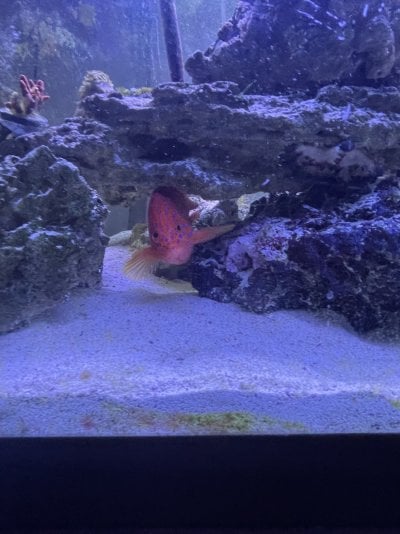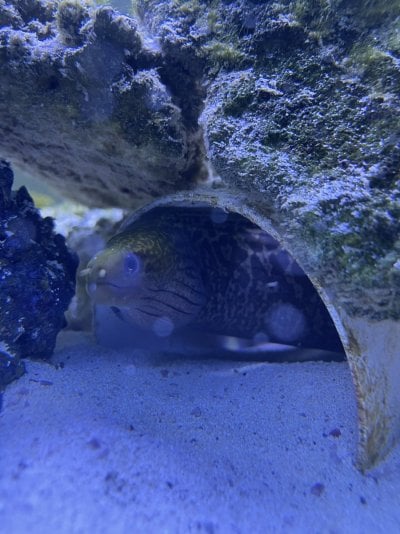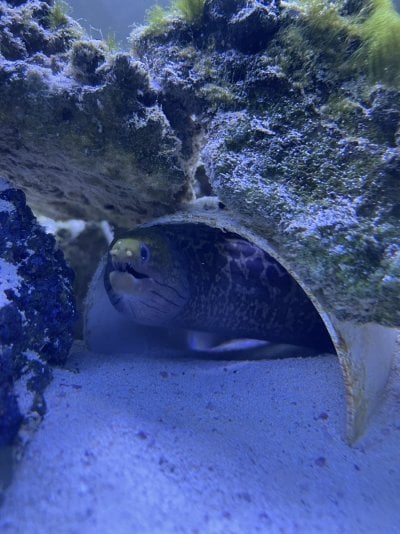I have a 125 reef tank with 35 gallon sump with an undulated moray, miniatus grouper, and picasso triggerfish. My cleanup crew consists of a handful of turbo snails (was around 20 now much less because of the triggerfish) and a horshoe crab and chocolate starfish. I have had much luck with many different lps and especially my gsp is taking off but hardly any luck on most sps and soft corals. I am currently vodka dosing 3.6ml per day and feeding a mixture of clams, LRS chunky, krill, silversides, and whole shrimp. Attached is a video of my eel and grouper in the same hole which they seem to have a hunting relationship together which I have read about can happen in the wild. The eel is currently about 1.5ft and the grouper close to 8in. I currently have a decent GHA outbreak and looking for advice on what I can introduce to eat it. I am thinking about a short spine urchin. Also how much should I feed the undulated moray? I have read many sources saying twice weekly large meals but I found he likes just 2 silversides every other day or a whole shrimp.
P.S.
sorry for the quality of video, under blues after 8pm is about the only time I can get a decent video of the eel and grouper together without the grouper darting into an unseen spot. Also the LFS I had bought my eel from claimed he was a fimbriated yellow head but I later researched and I believe he is an undulated.
P.S.
sorry for the quality of video, under blues after 8pm is about the only time I can get a decent video of the eel and grouper together without the grouper darting into an unseen spot. Also the LFS I had bought my eel from claimed he was a fimbriated yellow head but I later researched and I believe he is an undulated.




















